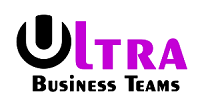The scenario could be a data center, late round the Saturday evening. A telecom distribution system fails, and operations staff are called in utilizing their weekend to rapidly identify the issue and restore operations as rapidly as possible.
![]()
Afterwards, many purchasers begin to get hold of, open trouble tickets, upset at systems outages and escalating customer disruptions.
They spends hrs attempting to fix a rectifier offering Electricity capability to a principal telecommunications distribution switch, and begin by replacing each systems component one-by-one wishing to obtain the guilty part. They grows very frustrated due not just in fatigue, but in addition their failure to get the chance to s0lve the issue. After many hrs they finally realizes there’s no issue with either the telecom switch, or rectifier offering Electricity capability to the switch. What is the problem be?
Finally, after many hrs of troubleshooting, chasing signs and signs and signs and symptoms, striking / miss component replacements, a mason finds out there’s a panel circuit which has unsuccessful because of years of misuse (for individuals domestic electricians it had been a genuine circuit that oxidized and shorted because of “over-amping” the circuit – without preventive maintenance or routine checks).
The incident highlighted possible – the organization focusing on the issue had very little critical thinking or problem-solving skills. They chased each apparent symptom, but never really addressed or effectively identified the specific problem. Great technicians, poor critical thinkers. Along with a true story.

Even if this incident is a data center-related problem-solving fail, we regularly avoid using good critical thinking in not just problem-solving, but in addition developing options and solutions for your business users and customers.
A couple of in the past I desired a getaway inside the job and spent a while focusing on self improvement. In addition to collecting certifications in TOGAF, ITIL, along with other aerchitecture-related subjects I added a few additional classes, including Kepner-Tregoe (K-T) and Kepner-Fourie (K-F) Critical Thinking and Problem-solving Courses.
Excellent means of thinking, along with a good refresher course reminding me of individuals extended since forgotten systems management techniques learned in graduate school – heck, nearly three decades ago.
This can be truly the issue: IT systems and business use of technologies have quickly developed formerly ten years, which rate of change seems to obtain speeding up. Processes and standards developed 10, 15, or more decades ago are woefully insufficient to help a number of our technology and business-related design, development, and operations. Tacit understanding, tacit skills, and gut feelings cannot be reliable to properly identify and solve problems we come across within our fast-paced IT world.
Bear in mind, this discussion isn’t just associated with problem-solving, but in addition works too when thinking about awesome product or solution development for brand-new and emerging business options or challenges.
Critical Thinking forces us to understand an issue (or chance) is, know and rehearse the variations between inductive and deductive reasoning, identify premises and conclusions, positive and negative arguments, and acknowledge issue descriptions and explanations (Erlandson).
Critical Thinking “religions” for example Kepner-Fourie (K-F) give a process and model for solving problems. Excellent if you possess time for you to create and follow heavy processes, additionally to can automate most of the procedure. However even studying extensive system like K-T and K-F continuously drive the advantages of creating a appropriate system for answering occasions.
Whatever the approach you might consider, repeated reference to critical thinking concepts and fitness will pressure us to intellectually step from chasing signs and signs and signs and symptoms or greater-dependence on tacit understanding (automatic thinking) when answering problems and challenges.
With This Particular managers, view it as just as one intellectual ITIL Continuous Improvement Cycle – we have to workout the mind and way of thinking. Established order, or counting on time-honored strategies to problems will not sufficient to create our IT organizations to return. We have to continue ensuring our assumptions originate from details, and steer apparent of undue influence – particularly by vendors, to make sure our stakeholders trust our problem or solution development process, and there is a good understanding of economic and technology transformations impacting our actions.





